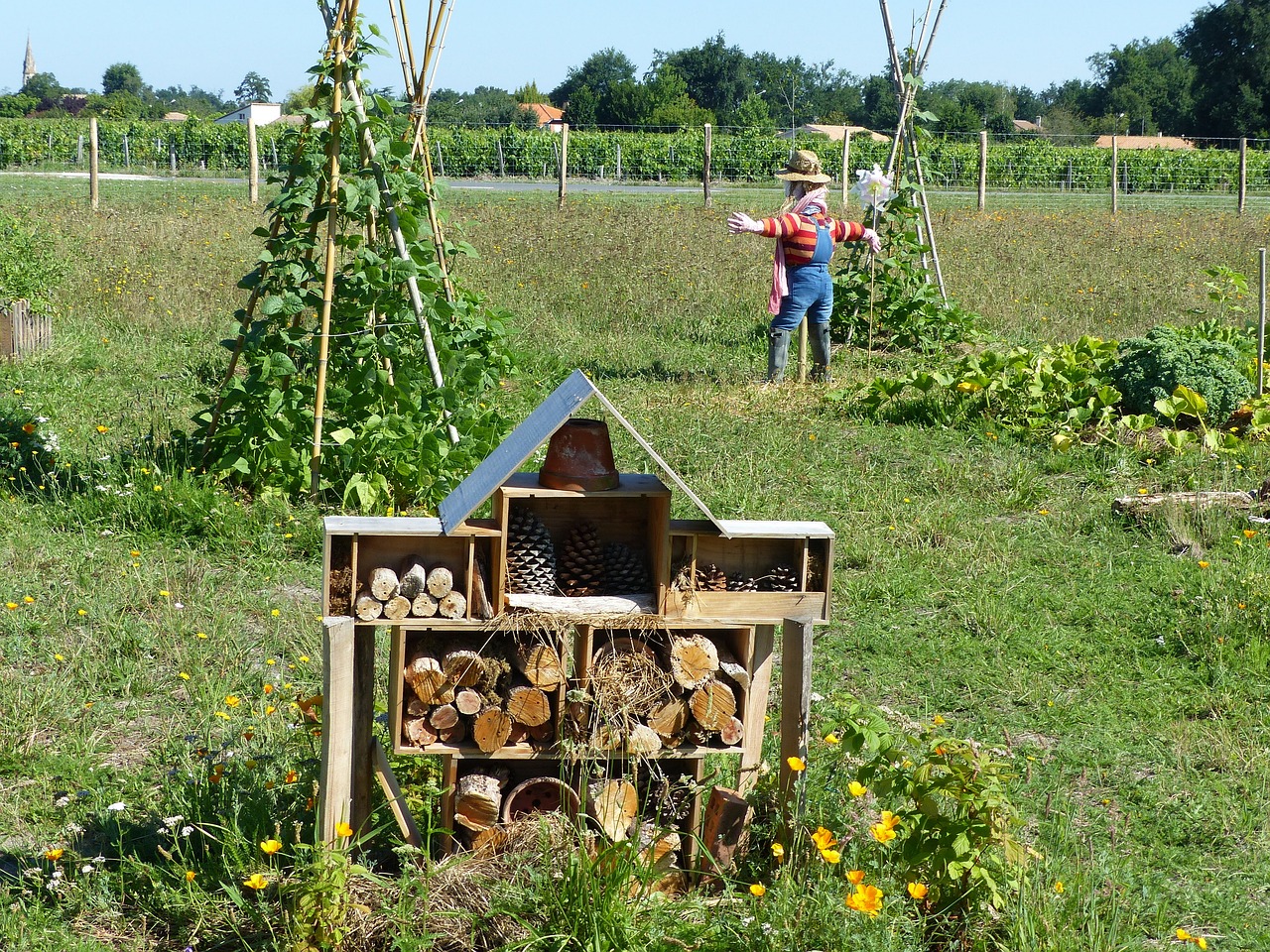6 Tips For Backyard Permaculture

Many permaculture plans start with a foundation of fruit and nut trees that can get very large. Keyline design and other water-management systems are often at odds with zoning regulations and space restrictions. But you can still establish beautiful, lower-maintenance perennial gardens in your backyard. Ultimately, permaculture is about designing outdoor spaces so that all elements of plants, resources and humans interact in a synergistic, efficient way. Each part of the system can perform and support many different functions no matter the size of the space.
Here are some ways to include permaculture in your backyard farm.
1. Use Resources Wisely
Permaculture design includes minimizing human-created energy use, designing smart water systems and maximizing natural resources. On a large permaculture farm, efficiently using resources might mean digging a large system of drainage swales and holding ponds. Some include solar panels, wood stands and windmills to harvest natural energy.
On a backyard scale, you can install rain barrels to water the garden and align garden beds, and dig swales to work with natural rain run-off, whether that’s collecting excess in dry areas or draining it away in swampy areas. Consider growing prolific plants, like hops and beans, to shade sunny parts of the house in summer and reduce indoor temperatures. Use highly efficient hand tools, like a broadfork and hand tiller, to minimize gas-powered machine use.
Carefully use your time and space too. If growing a certain plant takes extensive pruning or weeding and you don’t like those chores, try something else. If your family desires an outdoor cooking space or more privacy, adjust plans to create those areas.
2. Prioritize Diversity
Diversity—of plants, wildlife and experiences—is key to permaculture. Systems with many plant varieties are more productive than monoculture in the face of challenges like difficult weather, soil or chore time. They allow space for play, work and relaxation. Diverse gardens attract many species of pollinators and birds, and can be beautiful in all their variety.
3. Work With Nature and Existing Elements
Working around existing buildings and valuable real estate can be tricky for city growers, but part of the permaculture mindset is transforming those obstacles—those “problems”—into something that can benefit you and your garden, says Patrick O’Connell, certified Permaculture and Restoration Agriculture instructor and member of the Columbus Agrarian Society.
“For example, a yard covered with large trees will have trouble growing lots of sun-loving annual vegetables and fruits,” he says. “So instead, grow mushrooms and shade-tolerant ephemeral plants that gather most of their photosynthetic energy before trees put on their leaves.”
Similarly, build on existing physical structures by using fences to trellis climbing vegetables or flowers, slopes for plants needing well-drained soil, and reused materials for paths and borders. Especially in a neighborhood with lawn and garden standards, it’s a good idea to start incorporating perennials into existing flower beds to minimize the shock of creating something that looks so different than the status quo.
4. Build Appropriately Sized Plant Guilds
Forest gardening plans often suggest a top story of chestnut, walnut or other very large trees that could dominate a small yard or interfere with existing buildings and powerlines. Skip this top layer and start with smaller fruit and nut trees in tight spaces. Layer them together so that space and harvests are maximized.
“Focus on trees, shrubs, rhizomes and vines that are typically found in the mid-canopy and understory layers,” O’Connell suggests. “In temperate North America, a common assemblage of plants might be apple, pear, plum, peach, cherry, raspberry, gooseberry, currant, grape, strawberry and garlic.”
5. Act
A favorite saying of permaculture advocates is: “The best time to plant a tree is 10 years ago. The second best time is right now.” It’s easy to get caught up in the principles of permaculture. Some spend months or years trying to design the perfect system where every element interacts precisely with every need. Perfection in a natural system doesn’t actually exist, though, so it’s best to jump right in. Start with one area of your space or one area of need and move through the rest of your ideas as time and budget allows.
6. Adapt
Enjoy and observe your perennial food gardens. Focus on what thrives in your environment and be ready to change or move on from what isn’t working. Sometimes certain plants don’t get what they need from the soil, temperatures or pressures of your particular space, and it’s OK to allow yourself to move on to other plant families.
In time, you may experience gardening like O’Connell does, where “the biggest reward is having tons of fresh fruit and produce to harvest, while the biggest challenge is … harvesting tons of the fresh fruit and produce!”
Source: www.hobbyfarms.com


